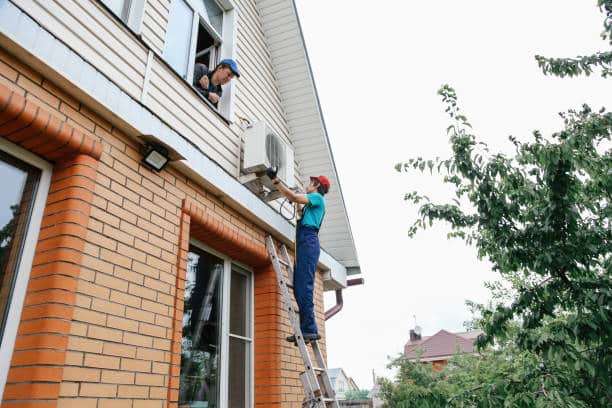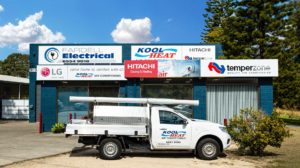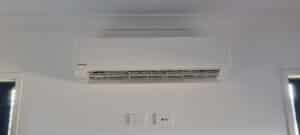When you are considering air conditioning installation in Port Macquarie, knowing where to start can be overwhelming. You’ve got to think about the right type and size of the unit, and the installation process itself can be a bit daunting. It’s crucial to understand common pitfalls and the significant benefits of professional installation to ensure your system runs efficiently and safely. But before you make any decisions, there are key factors to consider that could impact your comfort and energy bills. Let’s break it down step by step.
Key Takeaways
– Air conditioning is essential for indoor comfort, health, and protecting your home from mould and pollutants.
– Choose the right type of air conditioner based on your space, budget, and climate suitability.
– Proper sizing and placement of the unit are crucial for efficiency and optimal cooling performance.
– Professional installation ensures compliance with safety codes and reduces risks of installation errors.
– Regular maintenance, including filter cleaning and annual inspections, prolongs the lifespan of your air conditioning system.
Importance of Air Conditioning
Air conditioning isn’t just a luxury; it’s essential for keeping your home comfortable and your indoor air quality healthy. When the temperature soars outside, your air conditioner works hard to maintain a cool environment indoors, allowing you to relax and enjoy your space. Without it, you might find yourself struggling to sleep or concentrate, leading to increased stress and discomfort.
Moreover, air conditioning plays a vital role in filtering out pollutants and allergens. It helps remove dust, pollen, and other particles from the air, improving your overall health. This is particularly important if anyone in your household suffers from allergies or respiratory issues. By keeping your indoor air clean, you can create a more inviting and healthier living space.
Additionally, consistent climate control can protect your home’s structure and furnishings. High humidity levels can lead to mould growth, damaging your walls, furniture, and belongings. With a proper air conditioning system, you can prevent these issues and extend the life of your investments.
In short, investing in air conditioning is crucial for comfort, health, and maintaining your home’s integrity. Don’t overlook its importance; you’ll be grateful for the relief it brings.
Types of Air Conditioners
When choosing an air conditioning system, you’ll encounter several types, each designed to meet different needs and preferences.
The most common type is the split system air conditioner. This system consists of an indoor unit and an outdoor compressor, making it ideal for cooling single rooms or small spaces.
If you’re looking for a solution to cool multiple rooms, consider ducted air conditioning. It utilizes a central unit to distribute air through ducts, allowing you to control the temperature in various areas of your home.
Another option is the window air conditioner, which is perfect for those on a budget or with limited space. These units fit directly into your window and are easy to install.
Portable air conditioners are also available if you want flexibility. You can move them from room to room, making them great for temporary cooling needs.
Lastly, evaporative coolers are an energy-efficient option for dry climates. They use water to cool the air, providing a refreshing breeze.
Understanding these different types will help you choose the right air conditioning system for your home and comfort needs.
Factors to Consider
Choosing the right air conditioning system requires considering several key factors that can impact your comfort and energy efficiency. By understanding these elements, you can make an informed decision that suits your needs and lifestyle.
1. Energy Efficiency: Look for systems with high energy efficiency ratings, like the ENERGY STAR label. These units can save you money on your utility bills while keeping your home cool.
2. Noise Level: Consider how much noise the system generates. If you’re sensitive to sound, you might prefer quieter models, especially for bedrooms or living areas where you spend a lot of time.
3. Installation Requirements: Different systems have varying installation needs. Portable units might be easier to set up, while split systems may require professional installation. Assess your space and choose a system that aligns with your capabilities and budget.
Choosing the Right Size
Finding the right size for your air conditioning unit is crucial for achieving optimal cooling and energy efficiency. If your unit is too small, it’ll struggle to cool your space, leading to higher energy bills and wear on the system. On the other hand, a unit that’s too large will cool your room too quickly without properly dehumidifying it, leaving you uncomfortable.
To determine the right size, you’ll want to consider the square footage of the area you’re cooling. A general rule of thumb is to allocate about 20 British Thermal Units (BTUs) per square foot. However, factors like ceiling height, insulation quality, and window placement can affect this calculation.
You should also take into account the number of people regularly in the space and any heat-generating appliances. If you find yourself in doubt, consulting a professional can provide you with tailored advice.
Ultimately, investing time in choosing the right size will save you money and enhance your comfort. Don’t overlook this crucial step; a well-sized unit is the foundation for effective air conditioning in your home.
Installation Process Overview
The installation process for your air conditioning unit requires careful planning and execution to ensure optimal performance and longevity.
By following a structured approach, you can minimize potential issues and maximize comfort in your home.
Here’s a brief overview of the key steps involved in the installation process:
1. Site Assessment: Before installation, it’s crucial to evaluate the area where the unit will be placed. This includes checking for adequate ventilation, and electrical access, and ensuring that the unit will fit properly without obstruction.
2. Mounting the Indoor and Outdoor Units: Proper alignment and secure mounting of both the indoor and outdoor units are essential. This will help prevent vibrations and noise, ensuring your system operates smoothly. You’ll also need to ensure that drainage is correctly set up to avoid water damage.
3. Connecting Refrigerant Lines and Electrical Wiring: Once the units are mounted, connecting the refrigerant lines and electrical wiring is next. Make sure the connections are tight and leak-free, as this directly impacts the efficiency and safety of your air conditioning system.
Common Installation Mistakes
Avoiding common installation mistakes can significantly enhance your air conditioning unit’s performance and lifespan.
One frequent error is improper sizing. If your unit’s capacity doesn’t match your space, it can lead to inefficient cooling or excessive energy use. Make sure to calculate the square footage accurately.
Another mistake involves incorrect placement. Installing the indoor unit in a poorly ventilated area can restrict airflow. Ensure you choose a location that promotes effective air circulation. Similarly, the outdoor unit needs ample clearance; blocking it with foliage or debris can hamper its efficiency.
Many also overlook the importance of proper electrical connections. Loose or incorrect wiring can cause your system to malfunction or even pose a fire risk. Don’t skimp on this step—always ensure connections are secure and compliant with local codes.
Maintenance Tips for Longevity
Regular maintenance can significantly extend the lifespan of your air conditioning unit and keep it running efficiently. By following some simple tips, you’ll ensure your system stays in top shape for years to come.
1. Clean or Replace Filters Regularly: Clogged filters restrict airflow and force your unit to work harder. Check and replace or clean your filters every month, especially during peak usage seasons.
2. Inspect the Outdoor Unit: Make sure the outdoor unit is free from debris like leaves, dirt, and branches. Clear any obstructions that could block airflow. Regularly check the unit for signs of wear or damage.
3. Schedule Professional Check-ups: While you can handle basic maintenance, a professional technician should inspect your system at least once a year. They can identify potential issues early on and ensure your unit operates at peak efficiency.
Benefits of Professional Installation
Opting for professional installation ensures your air conditioning system is set up correctly, maximizing efficiency and performance from day one.
When you hire trained technicians, you benefit from their expertise, which means they understand the intricacies of various systems and can tailor the installation to your specific needs. This ensures your unit operates at peak efficiency, reducing energy costs and prolonging the lifespan of your system.
Additionally, professional installers adhere to safety regulations and local codes, eliminating the risk of potential hazards from improper installation. They also provide valuable advice on optimal placement for your unit, which can enhance airflow and cooling effectiveness.
If issues arise after installation, a professional service often includes warranties or guarantees. This gives you peace of mind, knowing that any problems will be promptly addressed without additional costs.
Conclusion
In conclusion, choosing the right air conditioning system is crucial for your comfort and energy savings.
Did you know that properly installed air conditioners can improve efficiency by up to 30%?
By avoiding common mistakes and following maintenance tips, you can enjoy a cool and healthy indoor environment for years to come.
Don’t underestimate the value of professional installation—it’s an investment that pays off in comfort and efficiency.
Stay cool, Port Macquarie!



